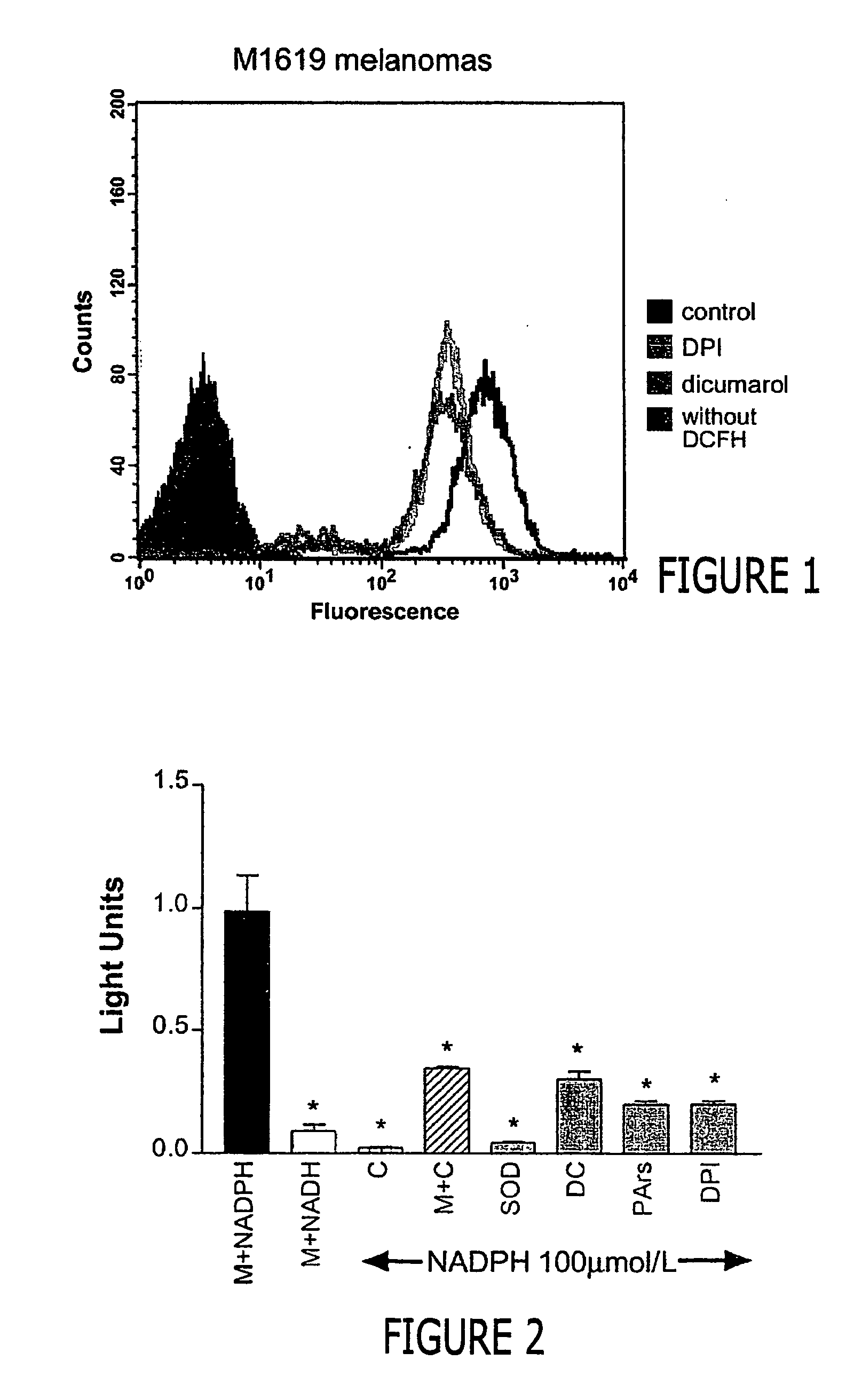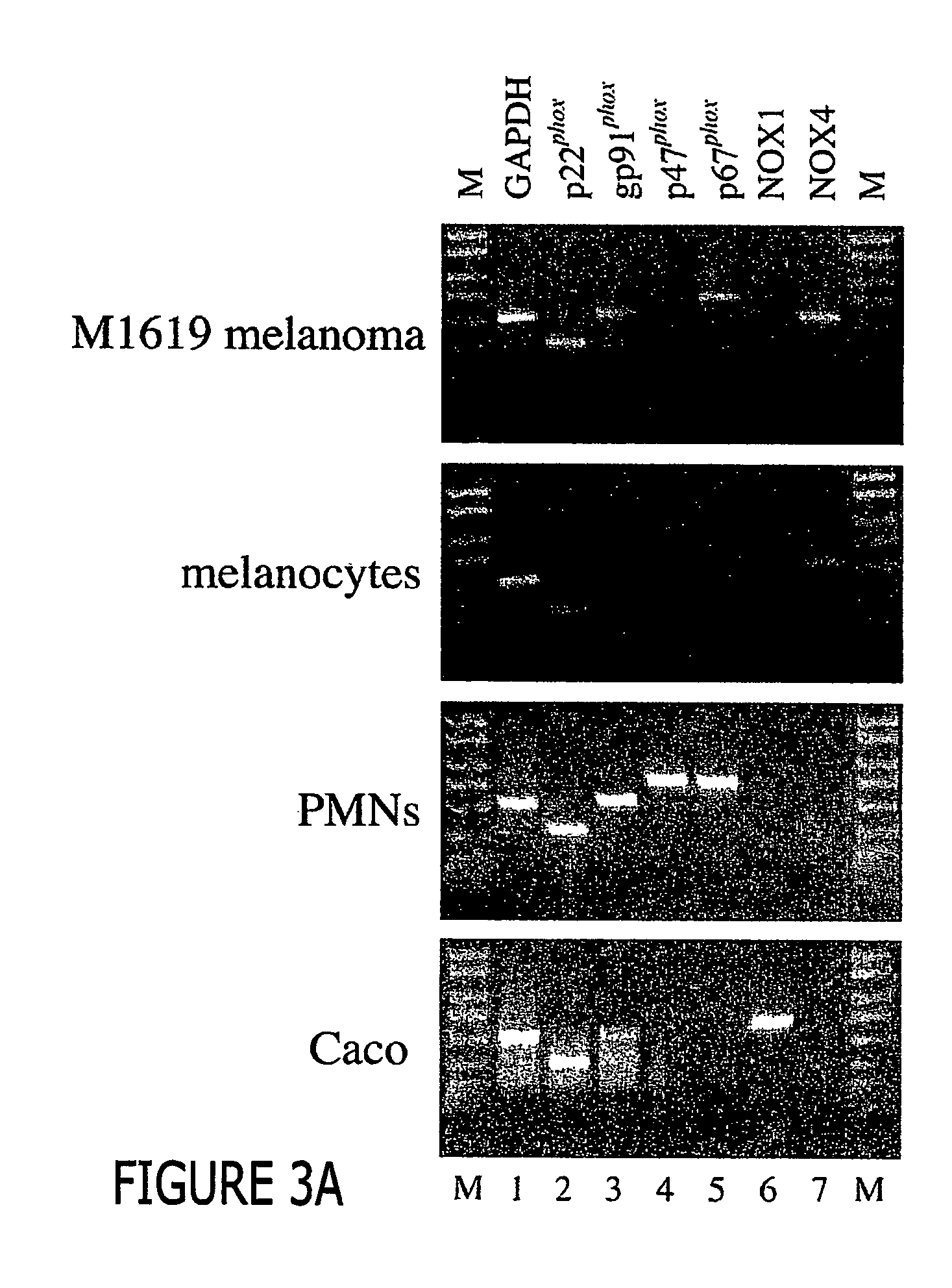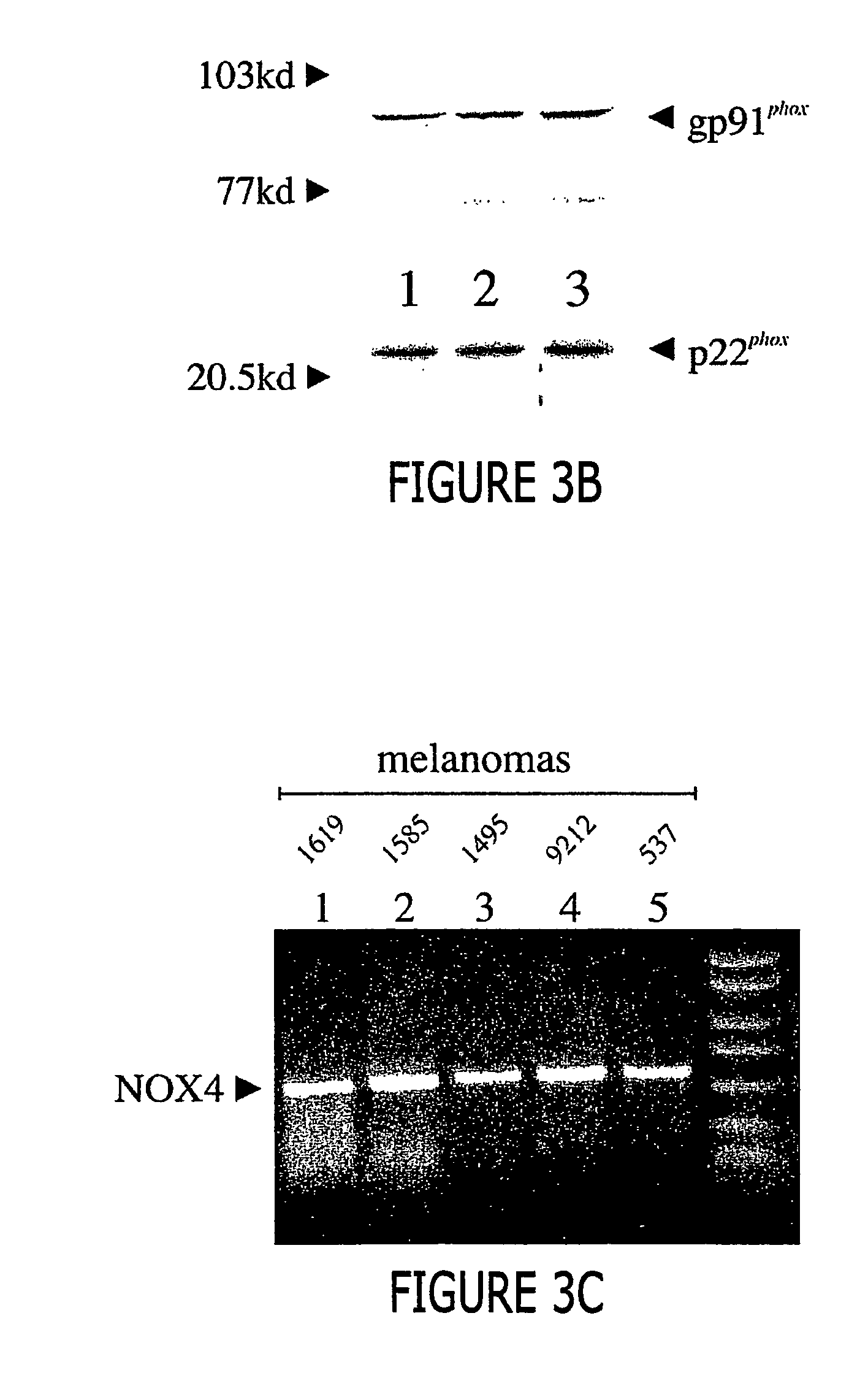Regulation of NAD(p)h oxidase growth and transcription in melanoma cells
a technology of nad(p)h oxidase and melanoma cells, which is applied in the direction of heterocyclic compound active ingredients, biocide, animal husbandry, etc., can solve problems that have not been previously demonstrated, and achieve the effect of inhibiting nad(p)h oxidase enzymes
- Summary
- Abstract
- Description
- Claims
- Application Information
AI Technical Summary
Benefits of technology
Problems solved by technology
Method used
Image
Examples
example 1
Malignant Melanoma Cells Produce Intracellular Reactive Oxygen Species.
[0049] Intracellular production of reactive oxygen species by M1619 cells was measured using oxidation of 2, T-dichlorofluorescin diacetate (DCFH-DA) to 2, 7-dichlorofluorescein (DCF) (J. A. Royall et al. (1993) Archiv. Biochem. Biophys. 302:348-355). DCFH-DA is a nonpolar compound that readily diffuses into cells, where it is hydrolyzed to the nonfluorescent polar derivative DCFH and thereby trapped within the cells. In the presence of H2O2, DCFH is oxidized to the highly fluorescent 2′,7′-dichlorofluorescein (DCF). Approximately 1×106M1619 cells were incubated in the dark for 10 minutes at 37° C. with 50 μmol / L DCFH-DA, harvested and resuspended in plain media. Fluorescence was analyzed in approximately 10,000 cells each using a FACScan (Becton Dickinson, Sunnyvale, Calif.) flow cytometer with excitation at 488 rim and emission at 530 nm.
[0050]FIG. 1 shows a comparison to spontaneous fluorescence of cells wi...
example 2
Malignant Melanoma Cell Membranes Produce Reactive Oxygen Species.
[0052] In this example the source of O2− generation was studied by preparing plasma membrane and cytosolic fractions from proliferating M1619 melanoma cells. The plasma membrane and cytosolic fractions were examined for their respective abilities to support SOD-inhibitable lucigenin chemiluminescence.
[0053] The 100,000 g membrane fraction of proliferating M1619 melanoma cells was prepared as described above. Chemiluminescence stimulated by 15 gg membrane protein was measured after incubation for 5 minutes in the presence of 5 μmol / L lucigenin and 100 μmol / L NADH or NADPH, with and without addition of 50 μg cytosolic protein, 300 units / ml SOD, 50 μmol / L diphenylene iodonium (DPI), 1 μmol / L phenylarsine oxide or 50 μmol / L dicumarol. M=membrane; C=cytosol; M+C=membrane+cytosol; SOD=membrane+SOD; DC=membrane+dicumarol; PArs=membrane+phenylarsine oxide; DPI=membrane+DPI; n=4 for each observation; *P<0.001 vs membranes+N...
example 3
Malignant Melanoma Cells and Melanocytes Express NAD(P)H Oxidase Components that are Necessary for Proliferation.
[0056] To determine whether components of the NAD(P)H oxidase-neutrophil- or its homologs are also expressed in melanomas and non-malignant melanocytes, RT-PCR on RNA extracted from proliferating cells stimulated by 10% FBS (melanomas) or HMGS (melanocytes) were performed and the results shown in FIG. 3.
[0057] In FIG. 3A the gels represent RT-PCR at 36 cycles. M1619 melanoma cells (FIG. 3A, top panel, lane 2) and other malignant melanomas (Table 1) strongly expressed the alpha subunit of cytochrome b558, p22phox, initially detected at 32 cycles. The 252 base pair PCR product obtained has been sequenced and is identical to bases 221-372 of the reported human mRNA sequence (Accession No. XM 008040).
[0058] Proliferating human melanoma cells also expressed gp91phox (top panel, lane 3, and Table 1 detectable only after 36 cycles as a 557 base pair product that was sequence...
PUM
| Property | Measurement | Unit |
|---|---|---|
| Mass | aaaaa | aaaaa |
| Mass | aaaaa | aaaaa |
| Mass flow rate | aaaaa | aaaaa |
Abstract
Description
Claims
Application Information
 Login to View More
Login to View More - R&D
- Intellectual Property
- Life Sciences
- Materials
- Tech Scout
- Unparalleled Data Quality
- Higher Quality Content
- 60% Fewer Hallucinations
Browse by: Latest US Patents, China's latest patents, Technical Efficacy Thesaurus, Application Domain, Technology Topic, Popular Technical Reports.
© 2025 PatSnap. All rights reserved.Legal|Privacy policy|Modern Slavery Act Transparency Statement|Sitemap|About US| Contact US: help@patsnap.com



